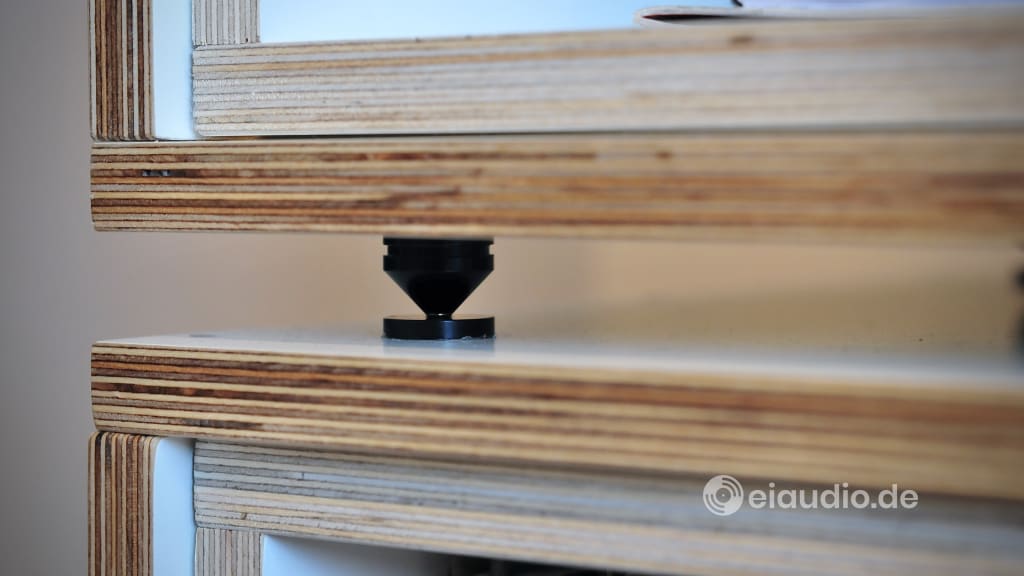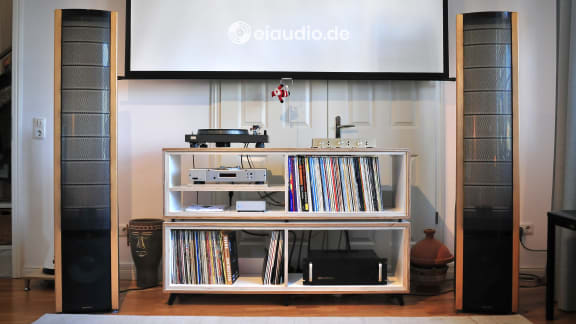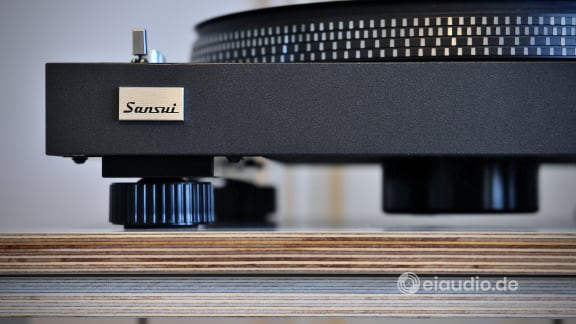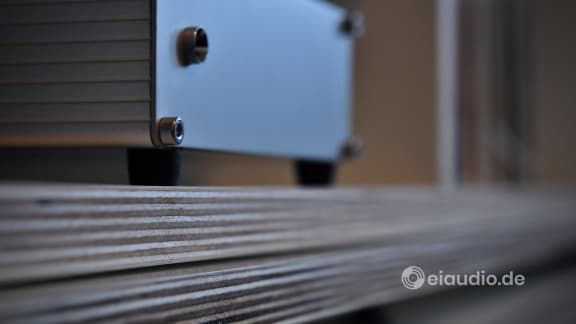AIHR-T1 Acoustic Insulating Hi-Fi Rack
Published: 09/01/2022
Author: Karsten Hein
Category: Gear & Review
Tag(s): Audio Racks
As we had some free time over Christmas 2021, my wife and I decided to build a proper rack for our Hi-Fi system. This was going to be our first dedicated Hi-Fi rack and serve the purpose of providing improved home entertainment, but would also serve as a more professional backdrop for our future interviews with friends in music production and audiophilia. And since we were missing a dedicated room for our Explorations in Audio, we knew that our new rack would need to serve multiple purposes at once.
The idea of building a rack had been on our minds for at least two years, and we had already discussed our expectations and created designs that were close to being completed on paper. As most of my early designs included metal couplings that needed to be welded by a professional, we were also looking at the possibility of purchasing a finished rack. After some weeks of searching and contacting metalworkers, we gave up trying to find either: a welder who was interested in a small-scale project for a rack prototype for eiaudio, and a ready-to-buy rack solution.
During the housing market bubble in Frankfurt, it was simply impossible to motivate a metalworker. Even when we informed them that we intended the rack to be a prototype for units to be sold via our eiaudio.de shop and on Amazon, not a single professional followed up his promise to call us back. On the other hand, the racks that were available for purchase were either ridiculously expensive or of poor sonic design. It also seemed that most audio racks were created for children's rooms, man caves, or a single's apartment rather than families. The ones that had some obvious sonic merits often looked overly technical and offered limited room for vinyl records. We, on the other hand, enjoyed having some of our vinyl collection at hand right at the rack. This also served to reduce a rack's technical and cold impression.
When it became clear that we would be waiting in vain for professional support, I drew up a new design that was entirely based on wood. This consisted of two separate shelf bodies stacked on top one another and separated by six spikes with coasters. Sabina found some cool-looking height-adjustable furniture feet that slanted outward and pressed down on a surface the size of one cent. The original design showed two layers of multi-ply on all parts of the rack. Sabina felt it was better for the inner structure to be constructed of a single layer. She also suggested that the inner boards should be recessed towards the front to give the rack a more elegant look.
I wanted to divide the left side of the top body with a horizontal board to place smaller devices there. In the sections that were to hold our records, I added a board to keep them from slipping out the back, but also for improved diagonal stability. Although the feet and spikes offered some electro-acoustic benefits, I was not yet truly content with the design. After giving it some more thought, I suggested that we place 1.5 mm of felt insulation between the two layers of wood all around each inner body. During assembly, we made sure that there was no contact between the outer and the inner layer, except for the felt itself. The rack shows visible torx screws on the outside, because screwing from the inside out would have created acoustic bridges between the layers.
We first built the inside and then the outside of each body, until they were both complete. Using a spirit level, we put the lower body in balance and then stacked the upper body on top. I placed our records in their opposite compartments and added the devices. We double-checked the position of the top board and found this still to be perfectly level. Since our Rega Planet CD player was a top-loader, I had first intended this to be placed on the top counter, next to the turntable. Sadly, it turned out that my interconnects were too short for the CD player to be positioned there. Rather than purchasing new cables, I placed the preamplifier on the counter, instead. With a bit of attention to detail, I managed to set all units up so that no cable touches another.
Our Rega Planet is special, in the sense that it can all too easily wobble if the surface underneath it is not rigid enough. I was able to stop its renewed wobbling in the rack by placing a multi-ply board underneath it. The result is an excellent-sounding rack that makes listening to vinyl a real joy. Not only does the new rack contribute more to sound than the IKEA BESTA solution, it also looks more sophisticated. Although the building material itself is heavy, it is still possible for Sabina and I to carry each rack body separately. Moving house with this rack is not a scary idea. We are both very pleased with the outcome.
Specifications
- Rack type: AIHR-T1
- Vibration insulation: felt-liner, acoustic spikes, adjustable feet
- Dimensions: (W) 1400 mm; (H) 902 mm; (D) 400 mm
- Spikes with coasters: (W) 22 mm; (H) 22 mm
- Furniture feet: (H) 80 mm
- Design: eiaudio.de
- Year: Dec 2021






